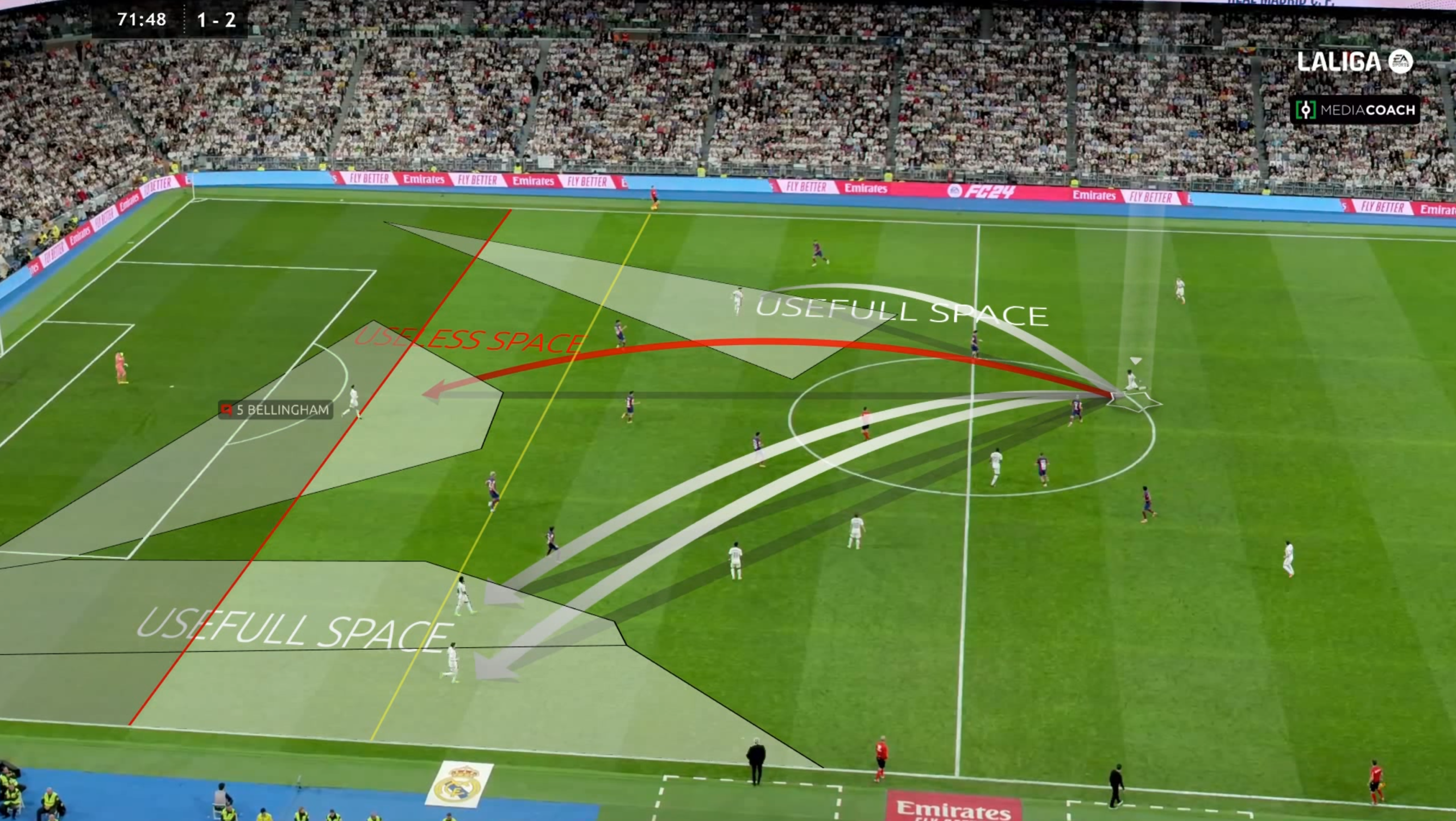
08 Ago The New Era of Tactical Analysis in Football: Intelligence in Useful Space and Offside
Discover how tactical intelligence and advanced technology are transforming modern football.
In professional football, every second counts. Decisions made in fractions of a second can determine the success or failure of a team. In this new era of tactical analysis, we present a revolutionary model that incorporates the detection of useful space and offside, optimizing both the tactical intelligence of players and team strategies. Accompanied by an explanatory video, this article is an essential guide for coaches looking to take their teams to the next level.
Introduction to the Advanced Model
Spatial analysis in football has significantly advanced from the traditional Voronoi diagram. This advanced model introduces two key innovations:
- Detection of Useful Space:
- Dynamic adjustment of the Voronoi area based on individual player speed and acceleration.
- Incorporation of the offside rule to distinguish between useful and non-useful spaces.
- Tactical Intelligence in Pass Execution:
- Automatic evaluation of the intelligence of both the receiver and executor of the pass.
- Identification of players who remain in offside positions during passing situations.
- Analysis of the receiver’s ability to avoid requesting passes in offside positions and the executor’s skill in choosing recipients in useful spaces.
The Importance of Frame-by-Frame Analysis
Football is a game of fleeting moments. One second can transform a useful space into a non-useful one due to the movements of opposing defenders. With frame-by-frame analysis technology, tactical intelligence can be measured with unprecedented precision. The introduction of VAR (Video Assistant Referee) in goal review emphasizes the need for this level of detail.
Practical Examples of Model Use
In the accompanying video, several game situations are shown where the advanced model provides a clear view of how players can optimize their positioning and decisions:
- Pass Receivers: Players adjusting their position in milliseconds to avoid offside and maximize useful space.
- Pass Executors: Making intelligent decisions by choosing recipients in useful spaces, avoiding passes to players in offside.
- Defensive Movements: Defenders who, with precise movements, turn useful spaces into non-useful ones, challenging the opponent’s offensive strategies.
Benefits for Coaches and Teams
Adopting this advanced model offers multiple benefits:
- Improved Decision-Making: Tactically smarter players who understand when and where to request or execute a pass.
- Optimized Training: Coaches can design more effective training sessions focused on tactical intelligence and positioning.
- Competitive Analysis: Teams can analyze their opponents and adjust their defensive and offensive strategies accordingly.
Conclusion
The future of tactical analysis in football is here. This advanced model not only redefines how we understand and optimize space on the field but also provides a solid foundation for more informed strategic decisions. With the integration of offside detection and tactical intelligence evaluation, teams can reach new levels of performance.
To explore this model in depth and see practical examples in action, we invite you to watch the video accompanying this article. The evolution of tactical analysis has arrived and is transforming professional football.
References:
- Dirección de Equipos de Fútbol. Revolutionary Model for Analyzing Proper Space Creation and Occupation in Professional Football.
- International Journal of Performance Analysis in Sport. Association of match running performance with and without ball possession to football performance.
- EconPapers. Influence of Players’ Maximum Running Speed on the Team’s Ranking Position at the End of the Spanish LaLiga.
For more details and to join the discussion, check out the LinkedIn post by Roberto López del Campo: LinkedIn Post.


